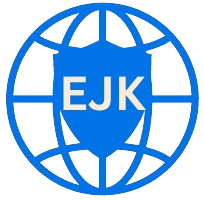
Web development in 2025 is seeing some drastic shifts in what Clients ask for, especially with AI becoming more widespread. Clients expect fast performance, clear information, and a seamless mobile experience, and behind the scenes, smart businesses are investing in scalable, secure, and accessible websites.
In this article, we highlight 10 of the most relevant web development trends in 2025, based on current standards, expected shifts, and what clients really need to know before building or upgrading their website.
Table of Contents
ToggleWeb Development Trends in 2025
1. Performance-First and Mobile-Ready Design
Page speed is critical. A slow-loading website can drive potential customers away before they’ve even seen your message. In 2025, performance-first development is now the norm, focusing on lightweight code, minimal plugins, and smart loading techniques that make your site load fast on any connection. Your website speed can also drastically affect how it ranks as well!
Performance goes hand-in-hand with mobile-first design. The majority of users browse on mobile devices, so your site should look sharp and function perfectly regardless of screen size. This isn’t a bonus, it’s a baseline expectation.
2. Enhanced Security and Trust Signals
With growing awareness around data privacy and online fraud, your website must prove it’s trustworthy. Users are quick to abandon sites that seem suspicious or outdated.
In 2025, essential trust signals include:
SSL encryption (https)
A clear privacy policy and cookie consent
Fast-loading, error-free pages
Secure forms (with advanced CAPTCHA to block bots)
Regular updates to plugins and software
Contact details and company credentials clearly visible
Security isn’t just about protection, it’s part of your credibility. And Google agrees, prioritising secure websites in its rankings.
3. Accessible, Inclusive Design (Legal Requirement from 2025)
As of June 2025, the European Accessibility Act (EEA) introduces new requirements for digital services, and while UK businesses may not be directly bound, the expectations around accessible design are rising fast, and any UK Company directly trading with the EU needs to comply if they want to keep doing so.
Accessibility isn’t just ethical, it’s smart business. It improves usability for all visitors and helps your website reach a wider audience. In some sectors, failing to provide an accessible experience could result in lost contracts, poor rankings, or even fines.
Key accessibility features include:
Keyboard-friendly navigation
Clear, resizable fonts
High contrast visuals
Image alt tags and screen reader compatibility
4. Smarter Contact Forms and User Experience
Modern contact forms are no longer static boxes with name, email, and message fields. In 2025, clients expect:
Forms with conditional logic (fields that adapt based on responses)
Integration with CRMs or mailing systems
Auto-fill using browser or customer data
Intelligent CAPTCHA to block spam while staying user-friendly
Every contact form is a chance to build trust. A poor form experience could mean a lost lead.
5. Modular Development for Long-Term Growth
For businesses planning to grow, scale, or update content regularly, modular development is a smart investment. It involves building reusable blocks (headers, cards, testimonials, CTAs) that can be arranged and reused across the site.
This method:
Speeds up future updates
Maintains consistent styling
Makes large websites easier to manage
While it may not be necessary for very small sites, it’s ideal for businesses looking to grow steadily or roll out multiple services.
6. Personalisation Using AI (With a Word of Caution)
AI is being used to personalise websites based on visitor behaviour, for instance by showing localised content, previously viewed products, or dynamic calls to action.
While this can boost engagement, it must be done carefully. Poor AI implementation can lead to irrelevant suggestions or confusing layouts. It’s best used in moderation and with clear intent, especially on service-based websites.
7. Motion Design and Micro-Interactions (Used Wisely)
Micro-interactions, such as subtle animations, hover states, and smooth transitions can make a website feel more intuitive and polished. But, restraint is key.
There is a growing trend where attention span and focus of users is decreasing, if your site doesn’t tell someone what they want to know in the first few seconds that is almost certainly a lost lead that may never return. Too many animations or moving elements can distract users from what they are looking for and also slow down the experience, especially on mobile. Good design makes the journey easier, not more confusing.
8. Headless CMS: Flexibility for Growing Businesses
A Headless CMS (Content Management System) separates your website’s backend (where you manage content) from its frontend (what users see). This allows developers more freedom to design without being restricted by traditional CMS themes or layouts.
For example, if you’re running a main site, blog, and mobile app, all using the same content a headless CMS can serve them all efficiently. It’s especially valuable for:
Multi-channel publishing
Fast-growing businesses
Advanced integrations with third-party tools
While not needed for every site, it’s an excellent option for businesses that require flexibility and control.
9. Structured Data and Voice Search Optimisation
Voice search continues to grow, and websites need to adapt. Structured data (a type of markup added to your site’s code) helps search engines better understand your content, which is crucial for voice queries and rich search results.
For service businesses, this could mean appearing in “near me” searches or featured snippets, both of which increase visibility and click-throughs.
10. AI-Assisted Development (Cautious Use)
AI tools are increasingly being used in the development process itself, for code suggestions, layout generation, or even building entire websites from prompts. While these tools can speed up prototyping, they aren’t a replacement for experience, strategy, or customisation.
For clients, the benefit is often quicker development cycles, but results still depend on clear goals, planning, and real expertise. Poorly implemented AI solutions can introduce security risks or usability issues leaving your website and customer data available to hackers.
Conclusion:
To summarise the biggest web development trends in 2025? Thoughtful, user-centred design that performs well and grows with your business. Technology will continue to shift and evolve, but clarity, speed, and trust are what matters most to the user.
Unfortunately there will no doubt be many companies experiencing loss of sales and lead generation due to lazy/poor implementation of AI causing decreased customer experience, so caution is advised, AI is wonderful when used correctly and not just blindly thrown in the mix and expecting to work perfectly.
If your website is due for an upgrade or you’re planning a fresh start, we can help build something that’s ready for today and tomorrow.
Let’s chat about creating a website that’s ahead of the curve, not just chasing it.
